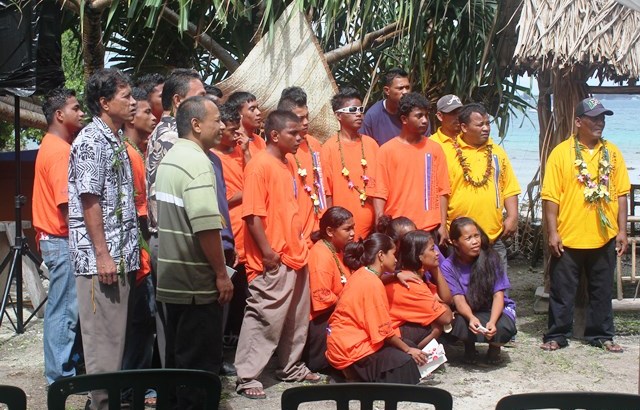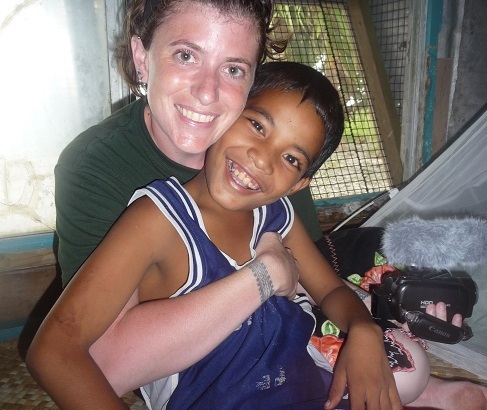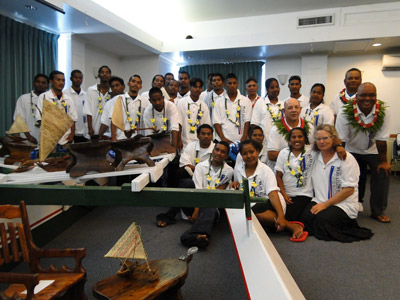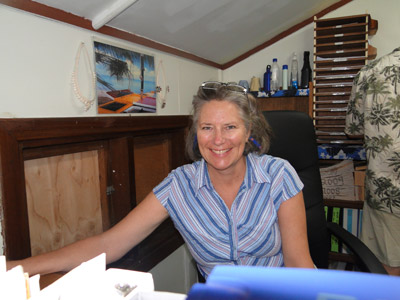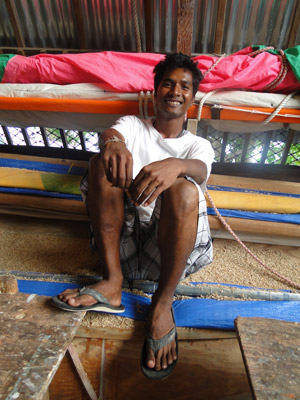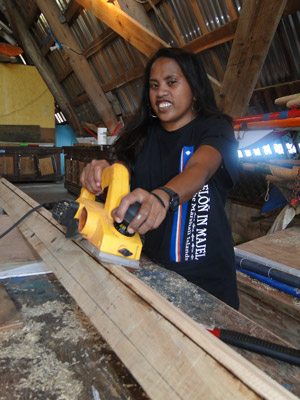Australian Volunteer Jane Evans played a key role in the training of WAM’s Class of 2013, which saw the trainees graduate in December of 2013. A large crowd attended the ceremony, held next to the Canoe House in the grounds of the Marshall Islands Resort. These included Alison Nashion, the head of the RMI National Training Council, which is a strong supporter of the WAM program. A key speech was given by long-time friend of WAM, Marshall Islands Resort’s General Manager Hirobo Obeketang.





